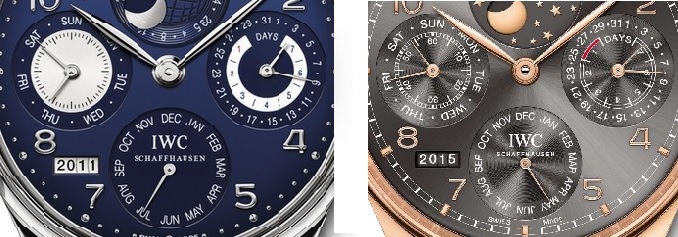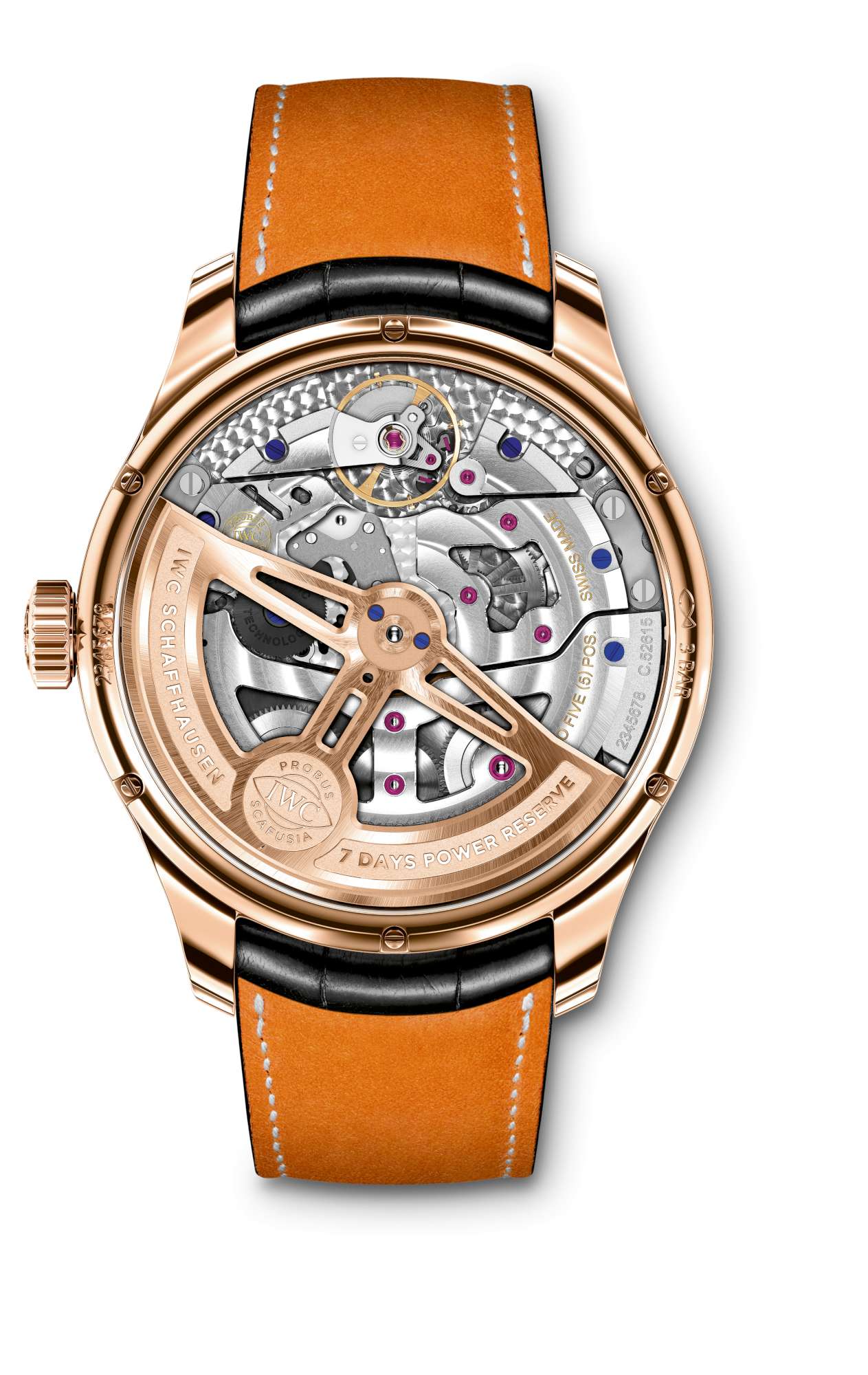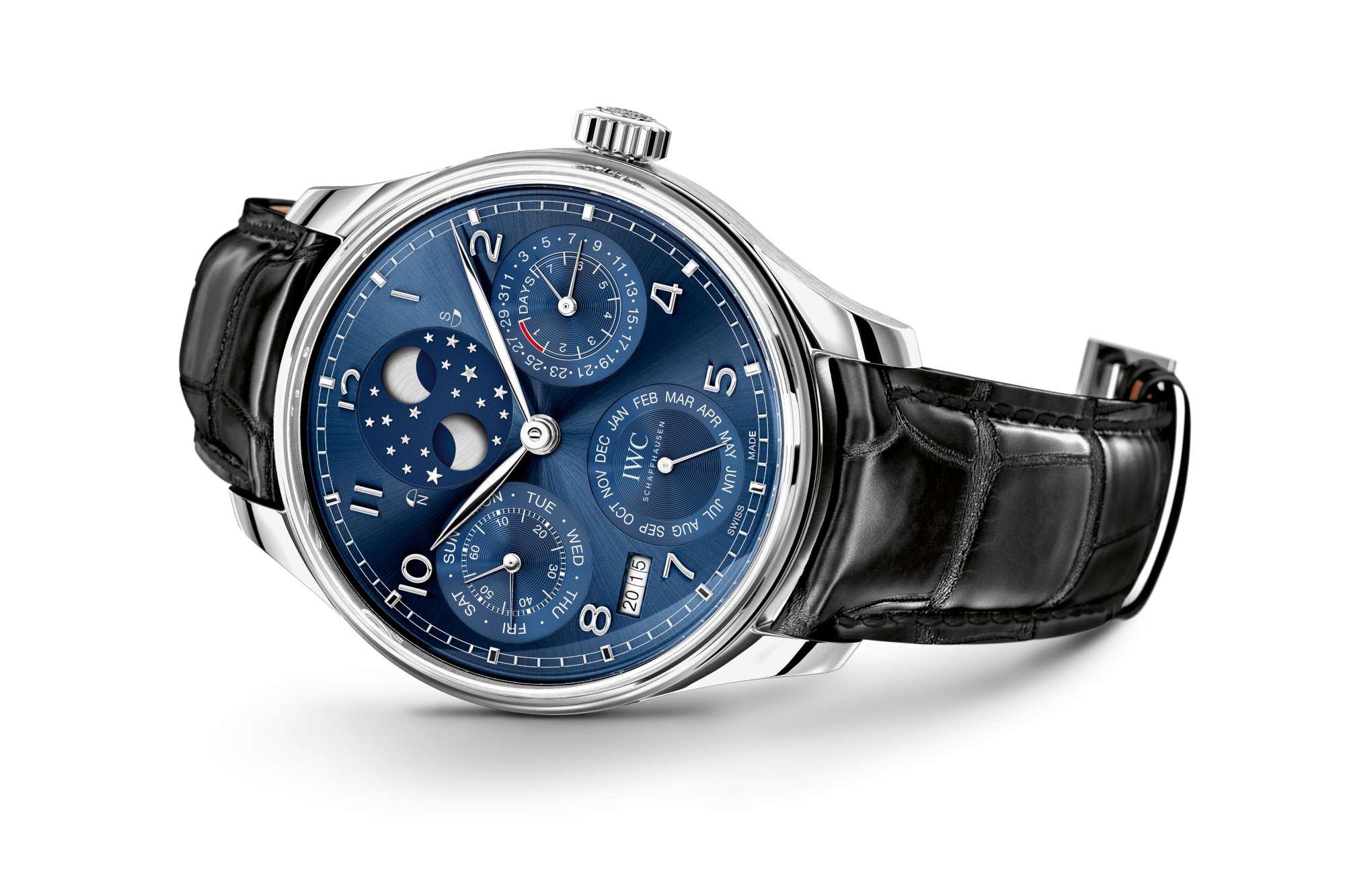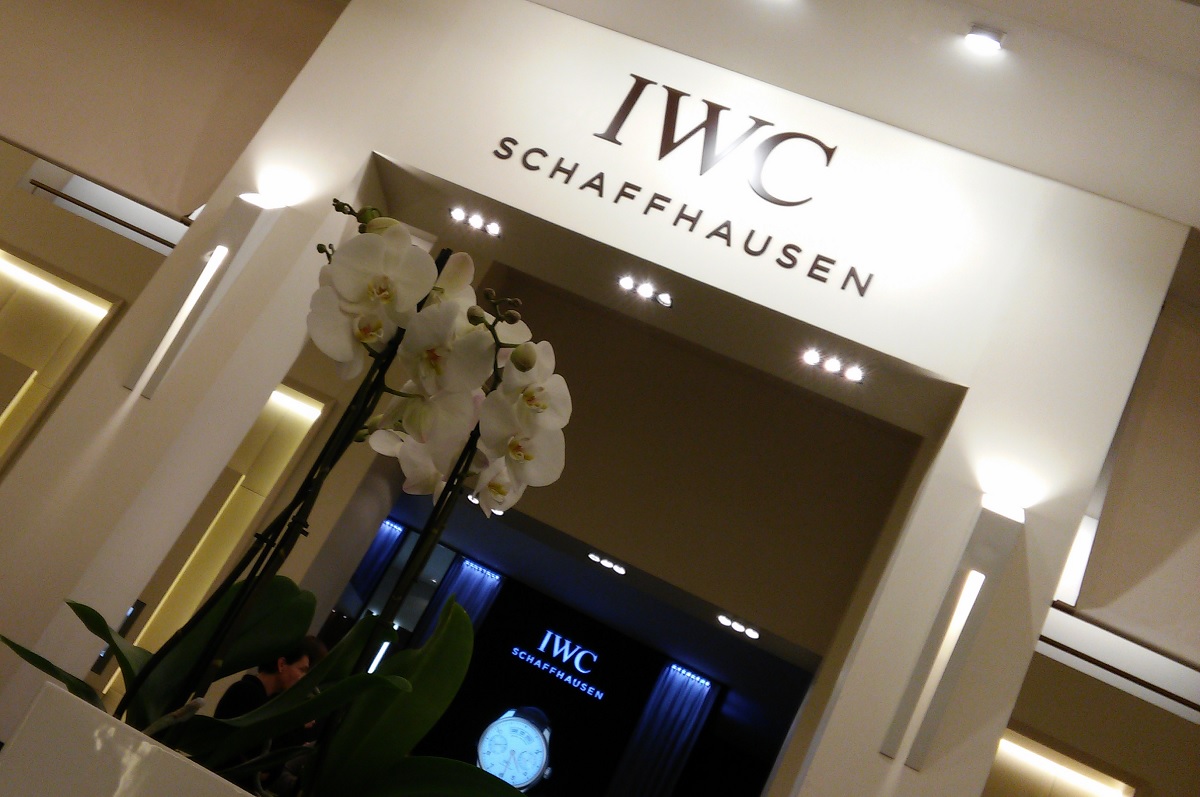The Portughese Perpetual Calendar Double Moon, presented at SIHH 2015 as the Portugieser Perpetual Calendar Double Moon reference 5034 (on the right above), is a good example of how a watch is redesigned. The 2010 version (on the left in the photo above) was very popular, and considered as perfect. How do you improve on what is perceived as perfection? Christian Knoop, Creative Director at IWC, provided an interesting overview of how a watch is born at a presentation in the IWC booth at SIHH. He was describing the Portugieser collection, the largest in the brand’s range, with the most complications. As it is a historic brand (celebrating its 75th anniversary this year), the designer has to identify the characteristics to be maintained because they are part of the family’s DNA, and what can be changed.

In the case of the Portugieser, the DNA is the case shape and size, with narrow bezel, the railway track chapter ring, feuille hands, and Portugieser numerals. Some fundamentals of the new range emerged in the initial design sketches, with an arch-edged watchglass that made it possible to lower the bezel and make the case lighter, reducing the visual height of the watch. The pencil drawings were translated into computer renderings, using the same software utilized by the engineers. This makes it easier for the movement designers to work on the initial design input.
The details that have been changed in the new version comprise the lugs, now shorter, a new double moon disc, and a very subtle change in the subdials for days and months, in which the lettering no longer flips from top to bottom.
The next stage is the prototyping, using 3D printing technology to create three-dimensional versions of the watch in plastic, so that case sizes and lug design can be tested on the wrist, often adding a disc of metal to simulate the weight of the final piece. This is followed by metal prototypes made in brass, which is softer and easier to work than steel. If necessary the brass can be plated to simulate gold.
Dials are a special problem because IWC don’t make them in-house, and likewise the straps. The designers have to reach an advanced stage of development for the dials to reduce the number of prototypes that have to be made by the supplier. They also have to work on what will be visible through the sapphire caseback, and in the new series, the movements are differentiated by finish, with blued screws and gold oscillating weights reserved for the complications. The rotors have a new design, more open for a better view of the movement.
Once the 3D design process has been completed, the engineers can begin the construction of the final prototypes. At the same time, the 3D files can be used to create renderings that IWC have completely replaced photography for the images that will be used for communications. This is a complex process, and each image takes about 3 weeks to complete, but it allows image generation to accompany the process of making the prototypes, instead of having to wait for them. The pristine perfection of the computer-generated images has to be mitigated by adding imperfections. The same is done for the images of the alligator straps, which are made more realistic by adding the minute fissures and colour variations that are a characteristic of the natural material used by Italian leather brand Santoni.
The designer’s work continues with the anniversary logo, display units for the watches, shop window animations, advertising campaigns and catalogues.
The company’s work also continues in the struggle to protect its patents. In particular, the double moon phase is an IWC speciality developed by the in-house engineers who wanted to give southern-hemisphere owners a view of the moon phase that corresponds to the moon that they see. In the 2010 model, the moon phase subdial had a countdown display showing the number of days remaining until the next full moon. In the 2015 piece, the double moon display has become a star-studded night sky. The precision of the moon phase display is such that it will have to be corrected by one day only after 577 years, an improvement even on IWC’s brilliant watchmaker Kurt Klaus who, in the 1980s, improved the conventional accuracy to one day in 122 years.
Price and availability
The IWC Portugieser Perpetual Calendar Double Moon reference 5034 is available in two versions, red gold and white gold. The red gold model IW503404, with slate-colour dial, black alligator strap, costs €38,900. The white gold model, reference IW503401, black alligator strap, midnight blue dial, costs €41,900. Available in boutiques from May 2015.







